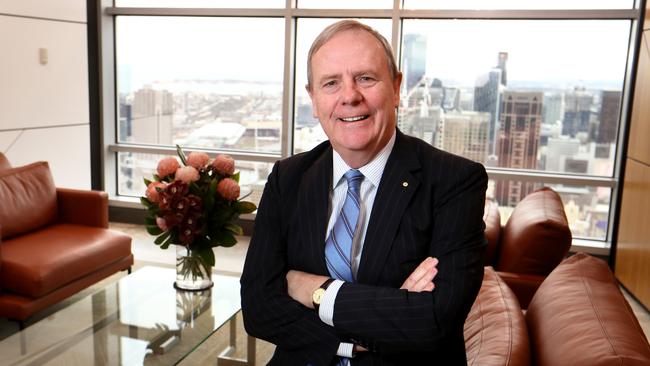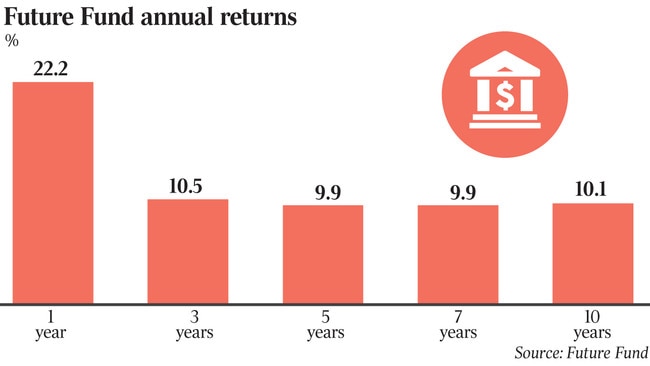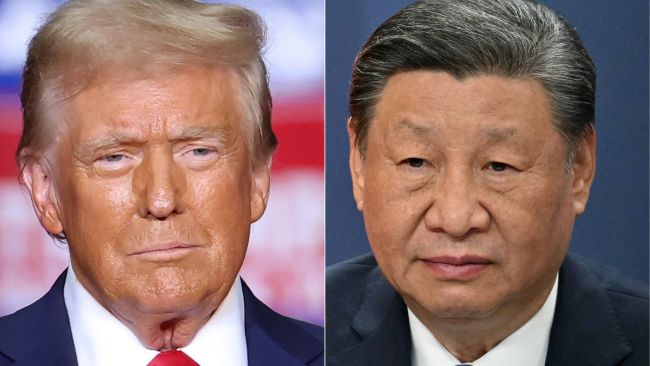Beware the reckoning, warns Future Fund chair Peter Costello
Easy money and record-low interest rates are driving investment markets to daily records, but Peter Costello says it’s a short-term strategy.

A world awash with debt, including $1 trillion with a Made in Australia brand, will produce a “reckoning” once interest rates and servicing costs inevitably rise, according to Future Fund chairman Peter Costello.
Despite the chairman’s sobering outlook, the $200bn sovereign wealth fund revealed on Monday that the most comprehensive strategic review since its 2006 inception had led to a modest swing up the risk curve in search of a healthier, sustainable return.
The fund also unveiled a spectacular 22.2 per cent annual return for the June financial year, with the Covid-19 economic recovery making a mockery of its mandated target of inflation plus 4-5 per cent.
Costello, the former treasurer in the Howard government, defended the Future Fund taking on greater risk, saying it followed “very careful analysis”, and the risk dial still pointed to conservative.
“The money belongs to taxpayers,” he tells The Weekend Australian.
“But I think this has been a feature of recent years, where there’s been a lot of cheap money and people haven’t been able to get the returns so they have moved up the risk curve.
“Bonds used to be a defensive asset, but now they’re not returning anything.
“So we’re comfortable with the level of risk we’re taking on, which would be similar to a balanced fund towards the lower level (of risk).”

When the Future Fund was developing its so-called new investment order, or position paper, it faced the twin constraints of a competitive, government-imposed return target and a souring economic outlook.
There were few places to turn, except up the risk curve.
Costello isn’t just lowering expectations when he talks about “much, much greater investment headwinds than tailwinds” – worryingly, he has a habit of invoking the word “reckoning”.
“It’s going to come; governments, including our own, are carrying large debts,” Costello says.
“Servicing costs are manageable when interest rates are low, but can you handle a $1m mortgage when the interest rate increases from 2 per cent to 5 per cent, and can you manage a $1 trillion (national) debt if rates go to 2, 3 or 4 per cent? The debt is not going to go away, so the reckoning comes when interest rates start to move up.”
The Future Fund’s new investment order was the outcome of trying to make sense of the abrupt upending of the old order.
For example, when the fund was formed, the cash rate was 5.75 per cent; now it’s 0.1 per cent.
Similarly, markets were rocked by the global financial crisis in 2008, leading to the adoption of radical fiscal and monetary policies that are still driving activity levels around the world well over a decade later.
The paper identifies a series of paradigm shifts that are reshaping the investment order and driving changes in portfolio allocations. They include “deglobalisation”, or the re-emergence of barriers to the free movement of goods and services, populism such as greater state intervention and controls, demographic shifts and climate change.
The Future Fund chairman also throws in fiscal-monetary co-ordination – the erosion of institutional independence after the GFC crisis leading to measures such as quantitative easing, yield curve controls and other forms of central bank intervention in government funding markets to support fiscal spending.
The pandemic accelerated the trend.
Future Fund chief executive Raphael Arndt has already adjusted the portfolio to reflect the new investment order, with a big erosion of the cash position funding a deeper plunge into local and global equities as well as private equity.
The private equity allocation expanded to 17.5 per cent of the fund worth $34.5bn, from 15.2 per cent worth $24.4bn in 2020.
The share held in Australian equities at June 30 was 8.5 per cent, or $16.8bn, up from 6.8 per cent a year ago, while equities in developed and emerging markets also lifted.
Meanwhile, the cash allocation fell from 17 per cent a year ago to 13.2 per cent.
Asked why he likes private equity so much, Costello laughs and says: “Because it’s returning extremely well!”
“Private equity is also seen as a way of avoiding greater regulation in the public markets, and because it doesn’t have to mark-to-market so often it can afford to take a longer-term perspective.
“In the US, we’ve noticed that the usual progression of a company through venture capital and then an IPO has changed to ownership by a buyout fund, which holds the asset for five to 10 years and then sells it to a private equity fund.”
If it were not necessary for a closed fund like the Future Fund to hold a deeper pool of liquidity than the industry funds, which can rely on a regular inflow of cash from the superannuation guarantee charge, the board would probably tolerate an even bigger allocation to illiquid, unlisted assets.
Costello says it’s a “huge advantage” for the industry funds, with the Future Fund required to think “much more carefully” about its liquidity position.
“All of (the industry funds’ money) can go out, knowing that the inflow will cover it,” he says.
He agrees with the assessment on Thursday of two major bank chiefs – Ross McEwan of National Australia and Westpac’s Peter King – that December data will probably show that the economy contracted in the September quarter.
Australia, he says, will probably lag other developed economies going into next year because of the nation’s lockdowns.
After that, the outlook depended on the collective will of federal and state governments to “open up”.
“Will we recover in the December quarter? The answer depends on how many restrictions will still be in place. This is the critical thing,” Costello says.
Speculation about the opening up of international borders was a secondary concern. If people stayed home instead of travelling, it was probably better for the local economy because they spend their money here.
The chairman has a ready explanation for the apparent conundrum of the local market continually setting records when the country is mostly locked down and an external geopolitical crisis occurs like the fall of Kabul.
Perverse outcomes tend to happen, he says, when central banks are printing money and handing it out at a 0.1 per cent interest rate.
“The money has to go somewhere until the central banks stop printing it and rates go up to 2-3 per cent,” Costello says.
“We’re living through unprecedented money-printing, available at unprecedented, low prices.
“The Reserve Bank would say that it had to follow the US Fed because otherwise it would affect the exchange rate, but I think it’s a short-term policy and here’s the problem – you can’t do it forever; it’s only good for a while.”



To join the conversation, please log in. Don't have an account? Register
Join the conversation, you are commenting as Logout